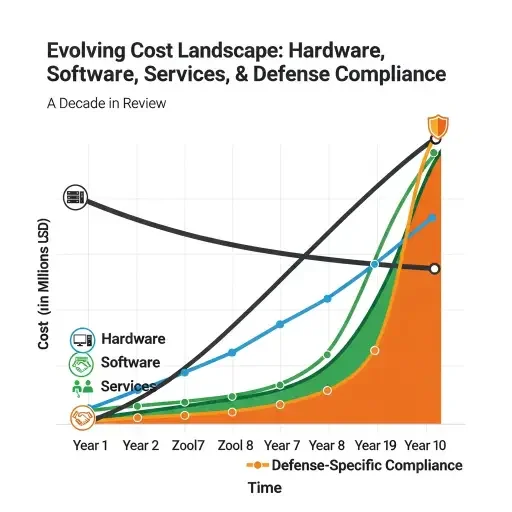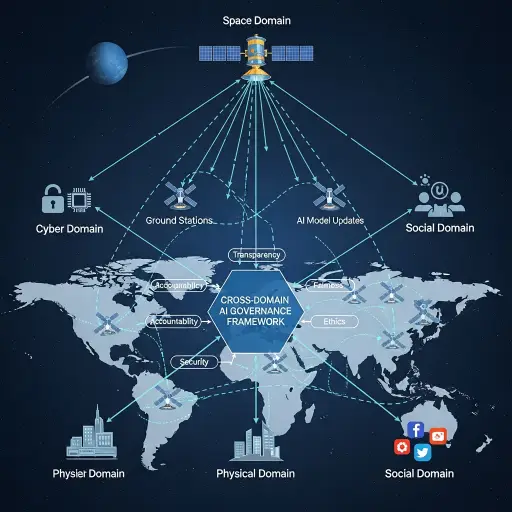Nokia’s banner reads like the quiet part of a market forecast: a telecom giant betting big on the next perimeter of defense, where networks are not just conduits but weapons platforms, sensors, and decision surfaces. The €100 million commitment to NestAI—an AI startup reputed for stealthy, end-to-end defense analytics—reads as both a corporate risk posture and a macro bet on how modern conflicts will be fought: at the speed of data, through the backbone you already own.
NestAI’s pitch is unapologetically pragmatic. The platform claims to orchestrate autonomous decision-making across distributed sensor networks, with edge-enabled analytics designed to reduce latency, increase resilience, and harmonize data across disparate ecosystems. In practice, that translates to a stack where 5G/6G-like networks become not only communication channels but real-time inference rails. For investors, the implication is clearer: defense budgets are increasingly tethered to networked capabilities—so the value lies in the integration layer that makes those capabilities actionable, not just present.
Altogether, the collaboration reads as a study in strategic leverage. Nokia brings scale, security-by-design, and decades of telecom-operations discipline. NestAI contributes the AI core: model governance suitable for mission-critical environments, cyber-resilience, and rapid deployment capabilities that can be decoupled from civilian networks when needed. The pairing is not accidental; it is designed for a Europe that is increasingly conscious of defense modernization, supply-chain sovereignty, and the vulnerabilities of single-vendor ecosystems.

The optics matter because this isn't a one-off contract win; it’s a blueprint for capital reallocation. European defense ministries have been signaling a pivot toward multi-domain operations that rely on resilient, intelligent networks. The early-stage €100 million figure signals commitment, not scale, but it establishes a precedent: defense tech is no longer a standalone silo. It is a spectrum pathway—telecom networks feeding autonomous analytics, and analytics returning optimized network operations, threat detection, and rapid decision loops to military and civilian operators alike.
For Nokia, the strategic logic is twofold. First, the defense market is increasingly a long-duration, high-visibility consumer of network equipment and services. Second, the collaboration with NestAI can become a vertical accelerator for Nokia’s own enterprise-grade offerings—network slicing, edge compute, and secure data fabrics—applied first to defense, then cross-pollinating into critical infrastructure markets that insist on cyber-resilient design. In other words, the investment isn’t only about defense AI; it’s about multiplying Nokia’s relevance across a broader, high-trust market.

NestAI’s lane, meanwhile, benefits from the credibility and scale of an incumbent player that understands complex procurement and risk management. For a startup, the €100 million line item is both validation and a runway: it orients the company toward larger, slower-moving government programs while preserving the agility to iterate in controlled, dual-use contexts. The risk, of course, is governance. Defense AI sits on the knife-edge between openness and security; NestAI must prove it can meet rigorous standards for data handling, model explainability, and incident response without compromising the speed of iteration.
Investors will be scanning three signals. One, how the partnership translates into practical deployments—pilot projects that demonstrate measurable improvements in surveillance, anomaly detection, and decision latency across hybrid networks. Two, the capital efficiency of NestAI’s AI stack when scaled against Nokia’s global footprint. Three, how Europe’s defense spending trajectory, already nudging upward, influences procurement clustering—favoring providers who can offer end-to-end capabilities from hardware to intelligence.

From a macro perspective, the Nokia–NestAI pact gestures toward a broader trend: defense tech convergence with telecom infrastructure is moving from opportunistic partnerships to strategic ecosystems. The rationale is not simply “more sensors = better security.” It is “more integrated systems = faster, smarter responses, with better governance and resilience.” In a world where cyber-physical threats morph quickly, the ability to deploy, monitor, and adapt across the edge becomes a competitive moat—not just for defense, but for critical civilian services that rely on stable networks.
Yet the story remains calibrated. The €100 million tag is modest relative to continental defense budgets, and it’s a staged bet rather than a splash. The real value emerges in what happens next: pilots that validate the hypothesis that networked AI, embedded in telecom layers, can reduce incident response times and improve resource allocation under duress. If NestAI’s platform can demonstrate robust operational reliability at the edge—with transparent governance and auditable decision trails—the collaboration could seed a new class of dual-use contracts that migrate with ease from military to municipal domains.

For investors, the takeaway is not that Nokia is abandoning traditional handset or enterprise devices, but that the company is stitching itself into Europe’s defense modernization loom—where the loom’s threads are fast, secure, and interoperable. The NestAI partnership, therefore, reads as a deliberate capital reallocation into a future where the defense budget is less about hardware and more about intelligent, network-aware defense orchestration. It is a wager that the next battleground is paved by latency-aware analytics, edge intelligence, and an ecosystem built to survive both the fog of war and the fog of cyber-crisis.
In closing, the €100 million line is a seed with a design plan. It signals a future in which telecom operators, defense ministries, and AI startups co-author the playbook for rapid, responsible, scalable defense modernization. If the early pilots land, the market will reward the synthesis: a network-centric defense, where the backbone is secure, the data is governable, and speed becomes the ultimate strategic asset. This is not a market rumor so much as a forecast written in silicon and bandwidth—an architecture of inference, deployed where it matters most, at the edge of the European defense map.
Sources
Company press releases, European defense budget analyses, telecom infrastructure reports, and expert market commentary on dual-use AI and network-centric warfare.
